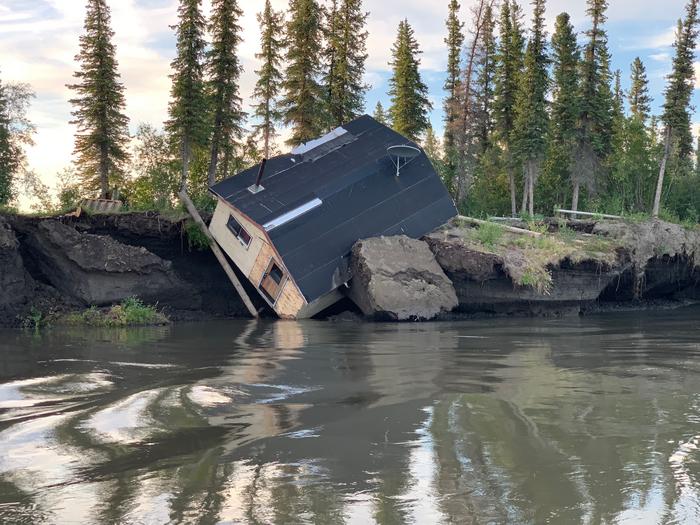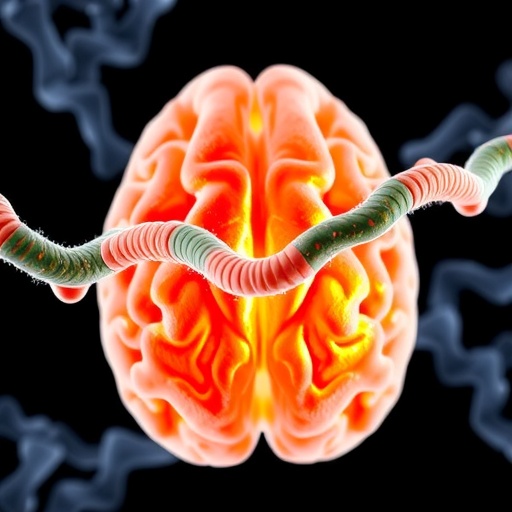
In recent years, the ramifications of climate change have become increasingly evident, with the Arctic emerging as a critical focus area for scientific inquiry. A comprehensive interdisciplinary and transdisciplinary study conducted by an international team led by the University of Vienna in collaboration with the Danish Technical University and Umea University sheds light on the social and environmental risks associated with the thawing of permafrost in Arctic regions. This pivotal research identifies five primary risks that affect infrastructure, transportation, water quality, food security, and public health, underscoring the urgent need for innovative responses and adaptable policy planning.
Permafrost, which is defined as permanently frozen ground that has remained at or below 0 degrees Celsius for at least two consecutive years, covers vast regions of the Arctic and sub-Arctic. As global temperatures rise, particularly due to anthropogenic influences, the stability of these permafrost layers is jeopardized. The melting of this frozen ground not only releases stored greenhouse gases like carbon dioxide and methane but also significantly alters the fabric of local ecosystems and communities that depend on these lands.
The study’s findings bring to light the complex relationship between thawing permafrost and infectious disease exposure, as the degradation of this critical soil layer allows previously confined pathogens and harmful contaminants to re-emerge and affect human health. This aspect of permafrost thaw poses substantial public health concerns, particularly for indigenous populations who have historically interacted with this environment and are now confronted with new threats. Researchers highlighted that regions with permafrost thawing frequently experience interruptions in supply routes, exacerbating these health risks.
The research team undertook a focused analysis across four distinct Arctic regions from 2017 to 2023 as part of the “Nunataryuk” project. These regions include the remote town of Longyearbyen in Svalbard, Greenland’s municipality of Avannaata, the Beaufort Sea region and the Mackenzie River Delta in Canada, and the Bulunskiy district located in the Republic of Sakha in Russia. By engaging with local stakeholders and leveraging multidisciplinary expertise, the team succeeded in integrating quantifiable physical risks with qualitative social impacts.
Within the study, scientists identified five interrelated hazards associated with permafrost thaw: infrastructure failure, transportation disruptions, declining water quality, challenges to food security, and increased exposure to diseases and contaminants. Infrastructure within coastal areas, riverbanks, delta regions, and mountainous terrains is particularly vulnerable to the effects of thawing permafrost. Anecdotal evidence from local residents underscores the urgency of this issue—one participant recounted witnessing a large section of land adjacent to their riverside cabin collapse suddenly into the water, an alarming reminder of the rapid changes occurring in their environment.
The gradual erosion of coastal and riverbank areas often triggers instability in soils, rendering them akin to quicksand, which poses direct hazards to traditional practices such as hunting and fishing. As the Arctic inhabitants rely heavily on these activities for sustenance, the implications for food security cannot be overstated. Moreover, the escalating risks affect not just the accessibility of these resources; they also compromise the integrity of hunting and fishing cabins, which may become increasingly difficult or dangerous to reach.
Water quality represents another critical concern in the context of thawing permafrost. For instance, in Longyearbyen, the Isdammen dam—constructed atop frozen ground—faces jeopardy as rising temperatures threaten local freshwater sources. This escalating scenario poses severe implications for public health and local communities reliant on clean drinking water, a matter that could intensify as warming continues.
As a continuation of their responsibilities to tackle these complex interrelations, the research team initiated a follow-up project dubbed “ILLUQ,” where they will delve deeper into the complex interactions between permafrost thaw, human health challenges, and pollution. This extended examination reflects the team’s commitment to developing a holistic understanding of the risks posed by climate change within vulnerable Arctic locales.
Moreover, the comprehensive analysis presented in this study contributes significantly to global discourse on climate adaptation strategies. The backdrop of climate change accentuates the importance of local knowledge and Indigenous wisdom, which are essential for forecasting and mitigating the associated risks of permafrost thaw. The lessons learned from the Arctic can offer insight into similar challenges faced by other global regions experiencing accelerated climate shifts.
As debate continues surrounding the implications of climate change—particularly in Northern regions—the urgency for policymakers to champion adaptive measures becomes increasingly critical. The study serves as an important call to action for governments, local communities, and international organizations alike to prioritize climate resilience strategies. Innovative infrastructural solutions, community engagement, and guiding principles derived from both scientific data and Indigenous perspectives could lay the foundation for effective adaptation in the face of an ever-evolving climate reality.
Future research should continue to explore the multifaceted implications of permafrost thaw while fostering collaboration between scientists, policymakers, and local communities. Only through collective action and comprehensive strategies can the Arctic and its inhabitants navigate the profound challenges posed by climate change.
As we continue to witness the unfolding narrative of climate change, the findings of this research underscore the pressing need to understand the effects regionally and globally. Scientific inquiry into permafrost thaw is more than just a regional issue—it resonates universally as we confront the reality of a changing planet dependent on informed action, cooperation, and collective resilience.
Climate scientists and social scientists must forge pathways for interdisciplinary collaboration, ensuring that the voices of those most affected by these changes are integral to future research agendas. By embracing a holistic approach, we can better equip ourselves to tackle the challenges posed by a warming world.
In conclusion, the findings presented by the research team are critical for informing policies aimed at mitigating the impacts of climate change in the Arctic region. As permafrost continues to thaw, the implications will reverberate across ecosystems, communities, and global climate responses, necessitating urgent and sustained attention from all sectors of society.
Subject of Research: Thawing Permafrost and Associated Social Risks in Arctic Regions
Article Title: A transdisciplinary, comparative analysis reveals key risks from Arctic permafrost thaw.
News Publication Date: 16-Jan-2025
Web References: https://doi.org/10.1038/s43247-024-01883-w
References: Communications Earth & Environment Journal
Image Credits: Angus Alunik, 2021
Keywords: Arctic, permafrost thaw, climate change, infrastructure risk, food security, public health, environmental science, interdisciplinary research.





